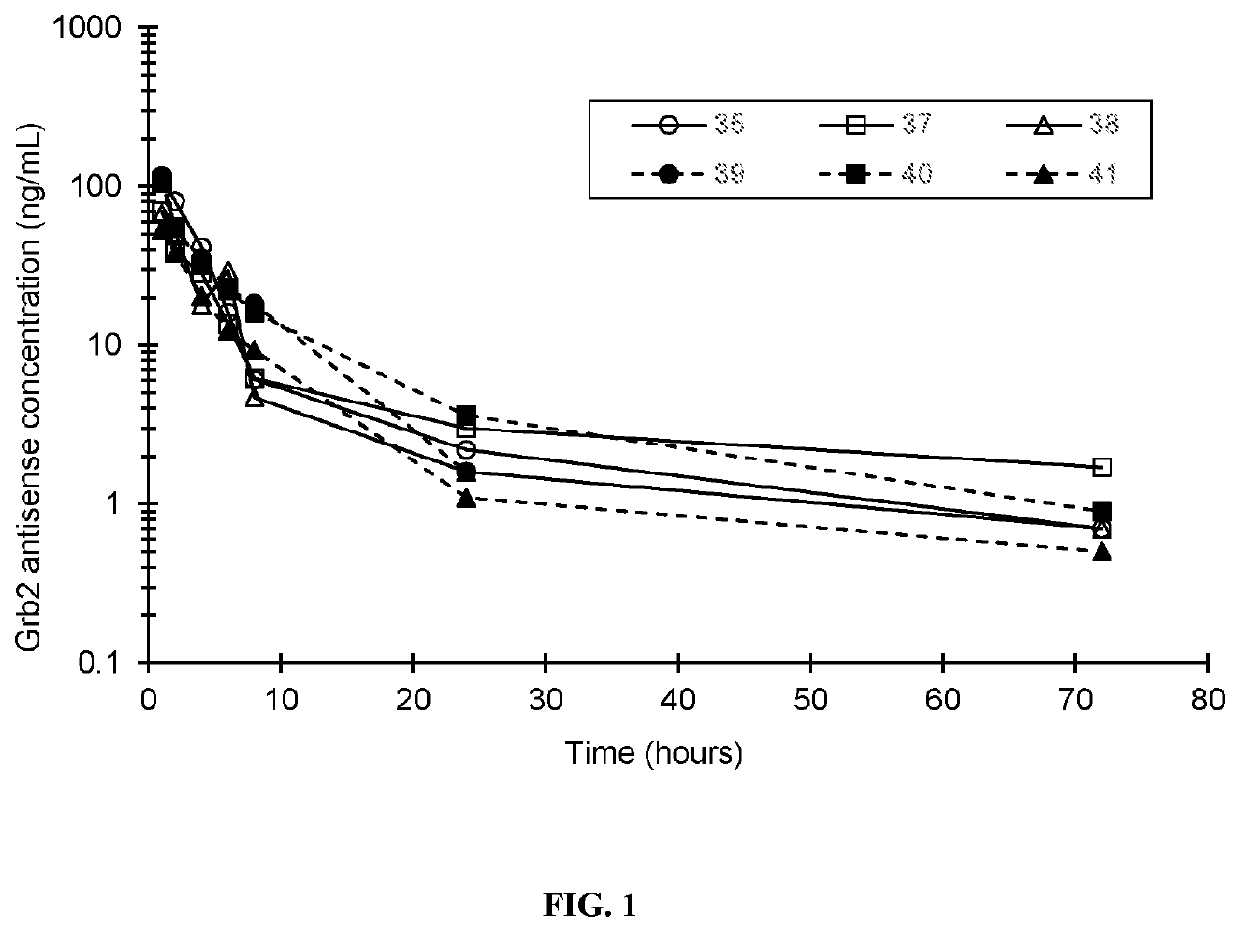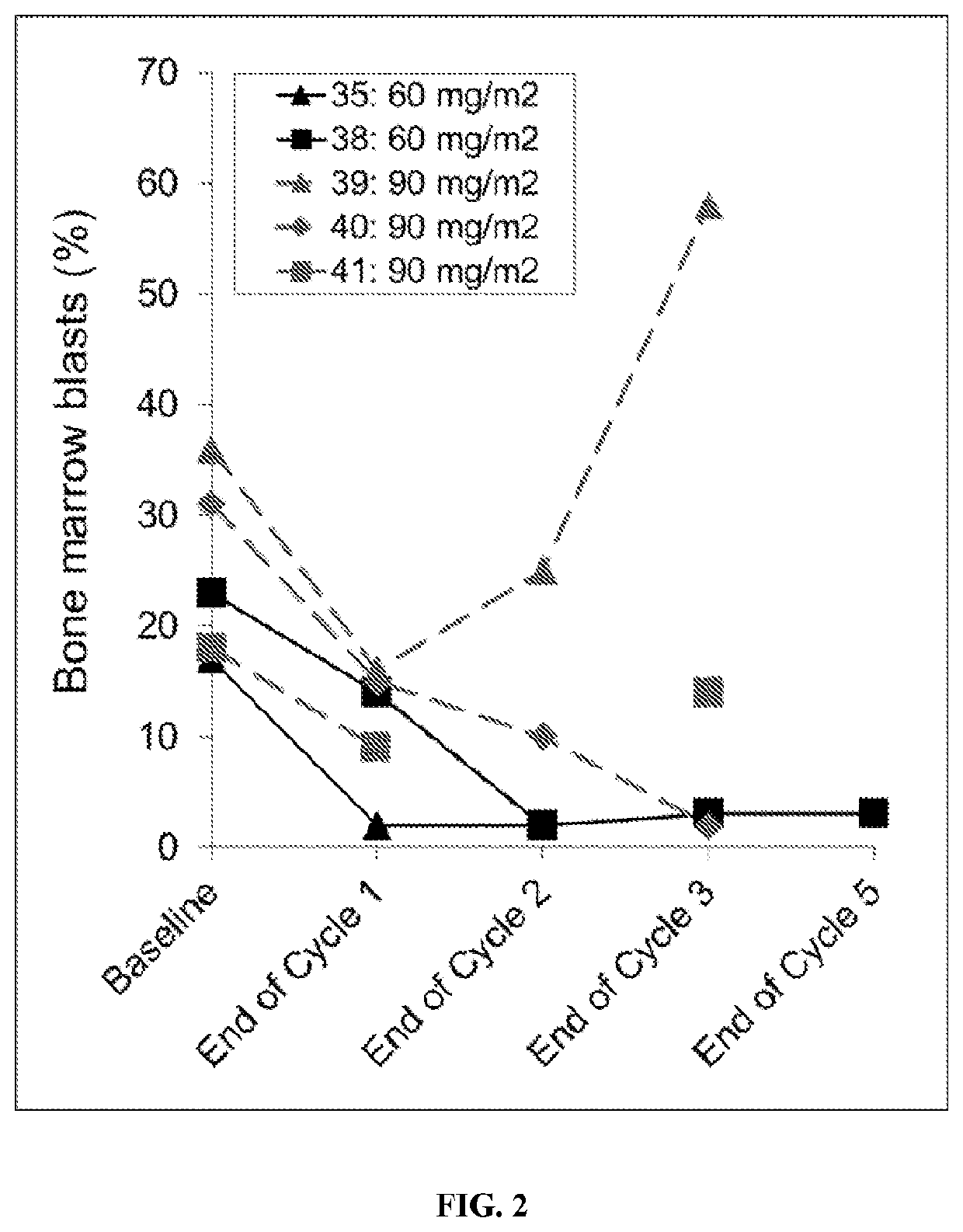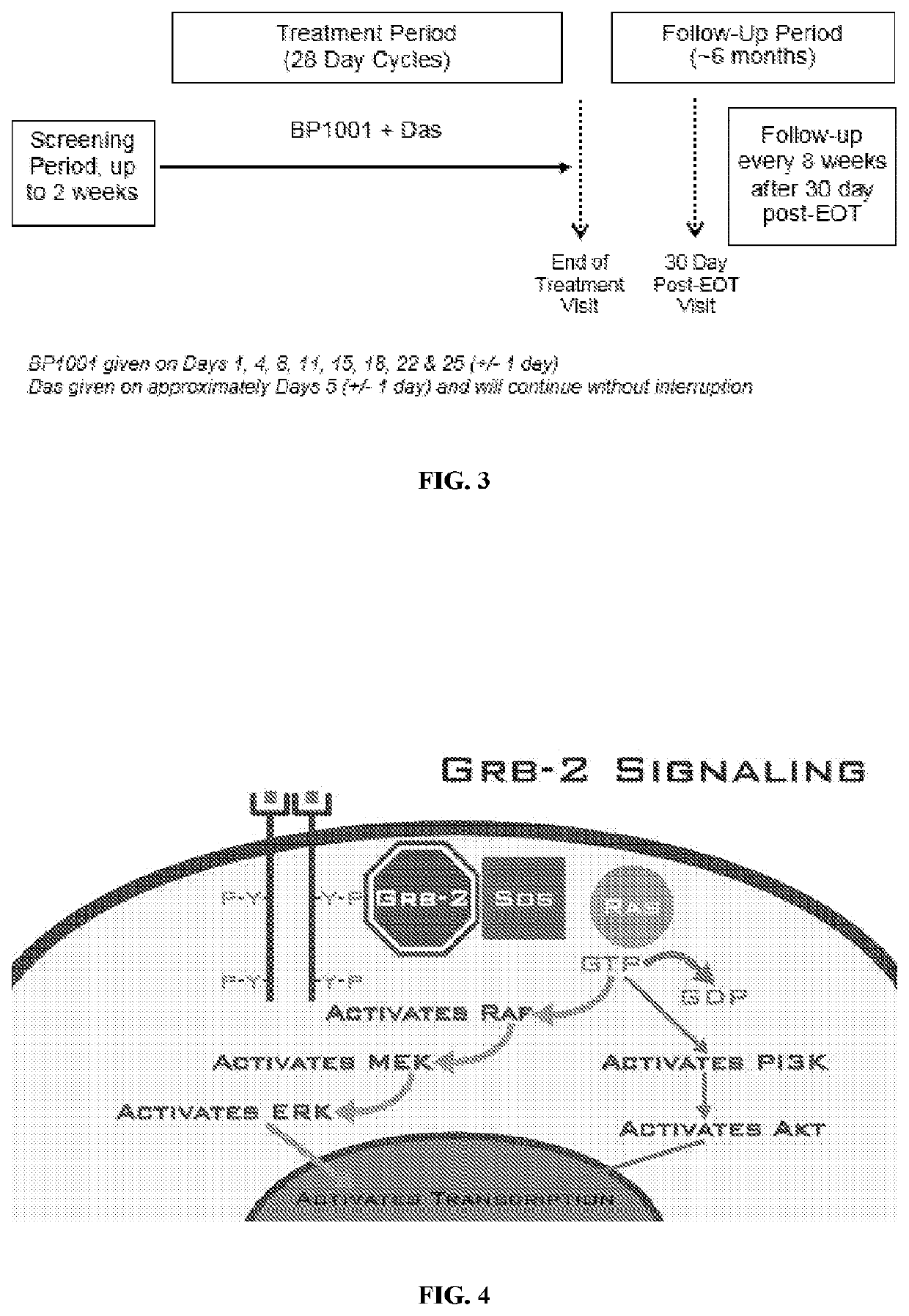Combination therapy with liposomal antisense oligonucleotides
a technology of antisense oligonucleotides and combination therapy, which is applied in the field of medicine, can solve the problems that cml patients in the blast phase do cml patients will not respond to imatinib or the second generation tyrosine kinase inhibitor, and achieve the effect of reducing the expression of grb2 protein
- Summary
- Abstract
- Description
- Claims
- Application Information
AI Technical Summary
Benefits of technology
Problems solved by technology
Method used
Image
Examples
example 1
tudy of BP1001 (Liposomal Grb2 Antisense) in Patients with Hematologic Malignancies
[0211]Essential to cancer cell signaling, the growth factor receptor bound protein-2 (Grb2) is utilized by oncogenic tyrosine kinases to activate Ras and ERK. BP1001 is a liposome-incorporated antisense that inhibits Grb2 expression. The study aimed to define safety, maximum tolerated dose (MTD), pharmacokinetics, and anti-leukemic activity of BP1001 in patients with hematologic malignancies.
[0212]BP1001 Drug Substance and Administration.
[0213]The sequence of Grb2 antisense oligo is: 5′-ATA TTT GGC GAT GGC TTC-3′ (SEQ ID NO: 1), which targets codons 2-7 of the human grb2 mRNA. Grb2 antisense oligo, composed of P-ethoxy oligo modification, was manufactured by Nitto Denko Avecia, Inc. (8560 Reading Road, Cincinnati, Ohio 45215, USA). Grb2 antisense oligo was incorporated into 1,2-dioleoyl-3-phosphatidylcholine lipid (Avanti Polar Lipids, Alabaster, Ala., USA), via a lyophilization protocol. BP1001 was p...
example 2
Efficacy of BP1001 in Combination with Das
[0251]The clinical activity of BP1001 will be investigated in CML patients who are in accelerated or blast phase. The response of accelerated and blast phase patients to imatinib is poor or short-lived. These patients are often treated with other tyrosine kinase inhibitors, such as dasatinib, nilotinib, bosutinib, and ponatinib. Here, it was determined whether BP1001 could enhance the inhibitory effects of dasatinib, nilotinib, bosutinib, and ponatinib in CML cells.
[0252]Cell Culture.
[0253]BV173 and K562 cells are Bcr-Abl-positive cell lines derived from CML patients. They were obtained from CLS Cell Lines Service GmbH (Eppelheim, Germany) and cultured in RPMI medium supplemented with 10% heat-inactivated fetal bovine serum.
[0254]Chemicals.
[0255]The sequence of the Grb2 antisense oligo is: 5′-ATATTTGGCGATGGCTTC-3′ (SEQ ID NO: 1). Grb2 antisense oligo was manufactured by Avecia (Cincinnati, Ohio, USA). BP1001 was prepared by Avanti Polar Lipi...
example 3
b / IIa Clinical Trial to Evaluate the Safety, Pharmacokinetics, and Efficacy of BP1001 in Combination with Dasatinib (Das) in Patients with pH+ CML in Accelerated or Blast Phase
[0273]Study Rationale.
[0274]The Phase Ib study will enroll participants with Ph+ CML in accelerated or blast phase. Participants will receive BP1001 plus Das. This is an open-label, single-arm clinical trial. Participants who are eligible to receive treatment in the Phase Ib study will receive BP1001 (60 mg / m2 for cohort 1 or 90 mg / m2 for cohort 2) and the same dose level of Das (140 mg). Once the dose has been identified for Phase IIa, all participants who are eligible to receive treatment in the Phase IIa will receive the same dose levels for both BP1001 and Das. There will be no randomization for this study.
[0275]Each treatment cycle will be 28 days. BP1001 will be administered over approximately 1 to 3 hours every 2 to 4 days (+ / −1 day allowable window) beginning on Day 1 of the cycle for a total of eight ...
PUM
| Property | Measurement | Unit |
|---|---|---|
| body weight | aaaaa | aaaaa |
| body weight | aaaaa | aaaaa |
| pore sizes | aaaaa | aaaaa |
Abstract
Description
Claims
Application Information
 Login to View More
Login to View More - R&D
- Intellectual Property
- Life Sciences
- Materials
- Tech Scout
- Unparalleled Data Quality
- Higher Quality Content
- 60% Fewer Hallucinations
Browse by: Latest US Patents, China's latest patents, Technical Efficacy Thesaurus, Application Domain, Technology Topic, Popular Technical Reports.
© 2025 PatSnap. All rights reserved.Legal|Privacy policy|Modern Slavery Act Transparency Statement|Sitemap|About US| Contact US: help@patsnap.com



